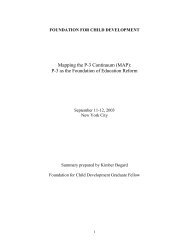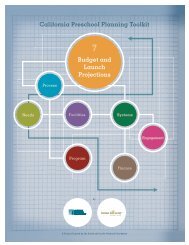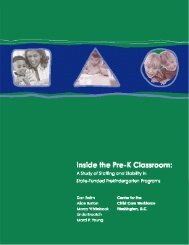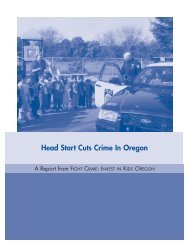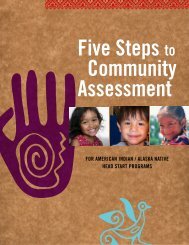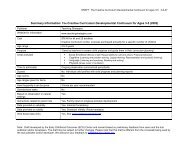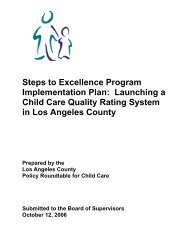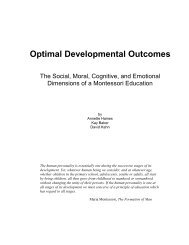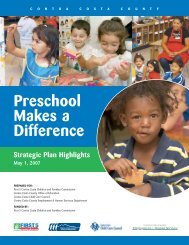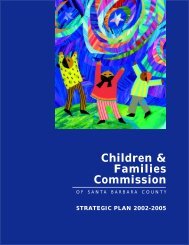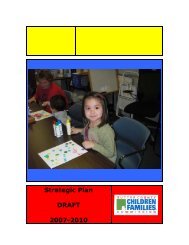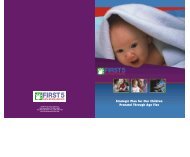Download this file - Plan4Preschool
Download this file - Plan4Preschool
Download this file - Plan4Preschool
You also want an ePaper? Increase the reach of your titles
YUMPU automatically turns print PDFs into web optimized ePapers that Google loves.
Class Size <br />
A major reform implemented in California public schools in 1996 was class size<br />
reduction (CSR) for kindergarten through grade three (K-3). In addition, the Morgan-<br />
Hart CSR program for high schools, which began in 1989 to serve a limited number of<br />
high schools (grades nine through twelve), was amended in 1998 to fund all ninth<br />
graders in two core subject areas. These programs continue to be voluntary. Penalties<br />
exist for schools that exceed maximum class size limits.<br />
K–3 Class Size Reduction (State Program)<br />
The K–3 CSR program was implemented to increase student achievement, particularly<br />
in reading and math, by decreasing class size. It is an incentive program in which<br />
districts decide whether and how much to participate.<br />
In the 2006-07 school year, there is $1.7 billion available for the state CSR program.<br />
There are two CSR implementation options:<br />
• Option 1: Full day<br />
o One certificated teacher for each class of 20 or fewer pupils<br />
o $1,024 per pupil<br />
• Option 2: Half-day<br />
o One certificated teacher for every 20 pupils for at least one-half of the<br />
instructional minutes offered per day, with the primary focus on instruction in<br />
reading and mathematics<br />
o $512 per pupil<br />
The state CSR program also has the following key elements:<br />
• Each class must average 20.44 (using daily enrollment) or fewer pupils from the<br />
first day of school through April 15.<br />
• Classes must have certificated teachers only—no aides.<br />
• Four grades may participate at each school (K–3).<br />
• Priority order must be followed: first priority is grade one; second priority is grade<br />
two; third priority is kindergarten and/or grade three.<br />
• Staff development must be provided for newly participating teachers.<br />
• Districts are subject to an annual independent audit process.<br />
• Districts with only one school serving K–3 pupils and no more than two classes<br />
per grade level may have up to 22 pupils per K–3 class as long as the average for<br />
all participating classes at that school is 20 pupils and the district’s governing<br />
board has certified that the school has no other option.<br />
123



